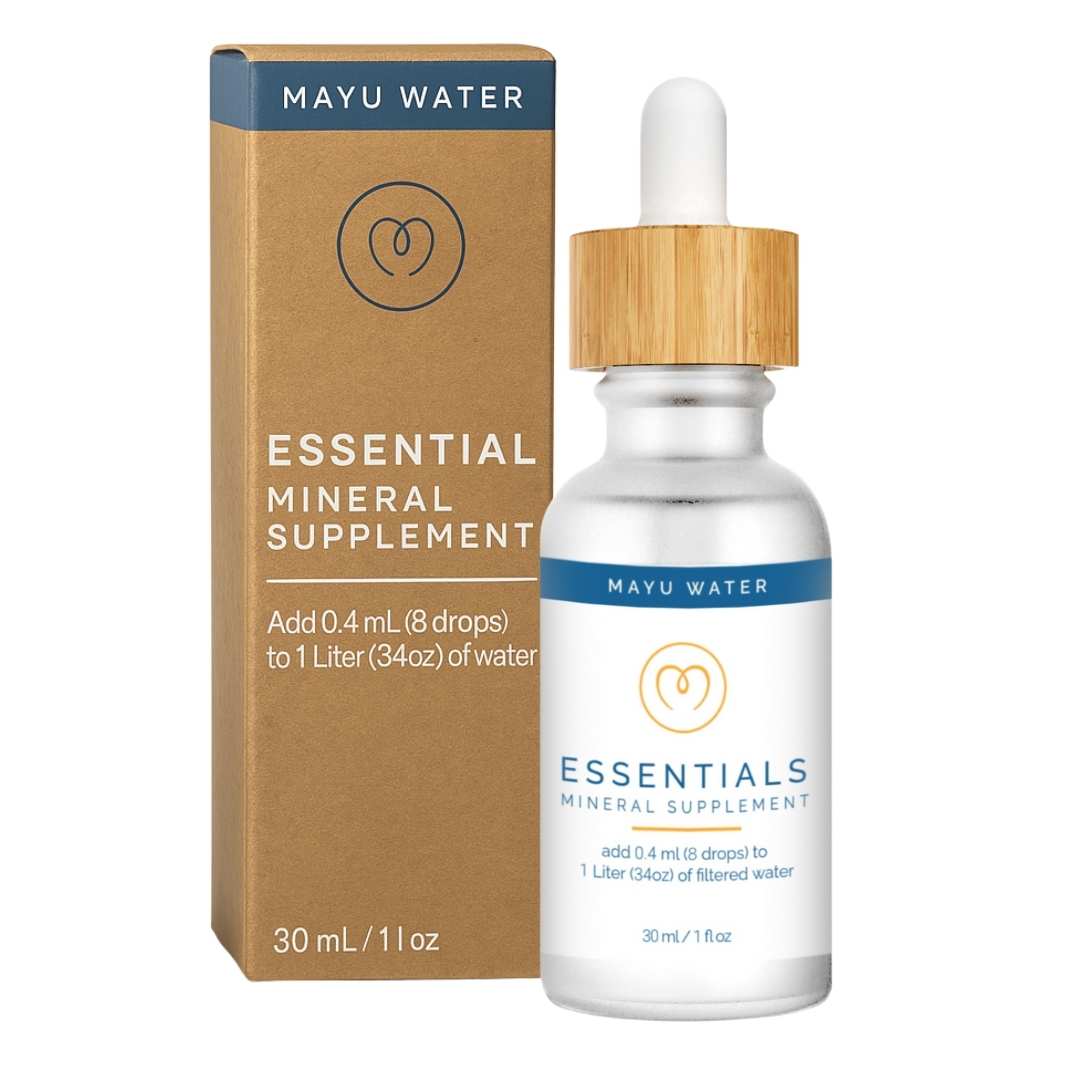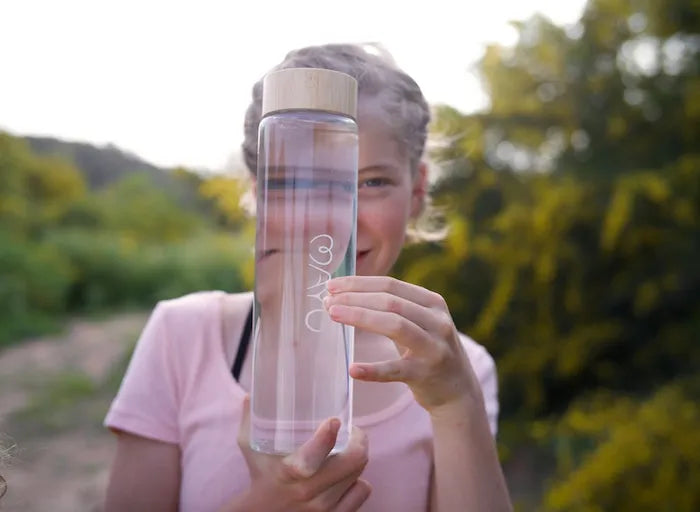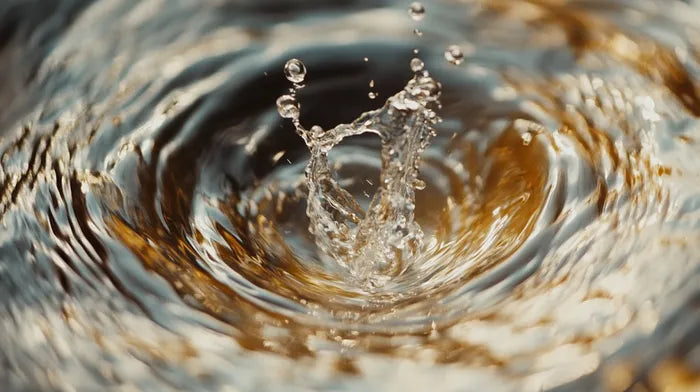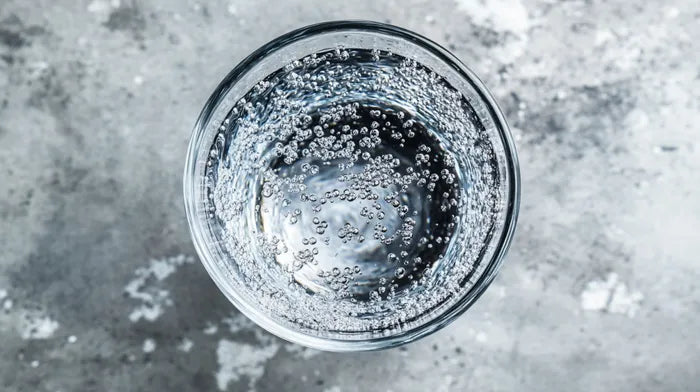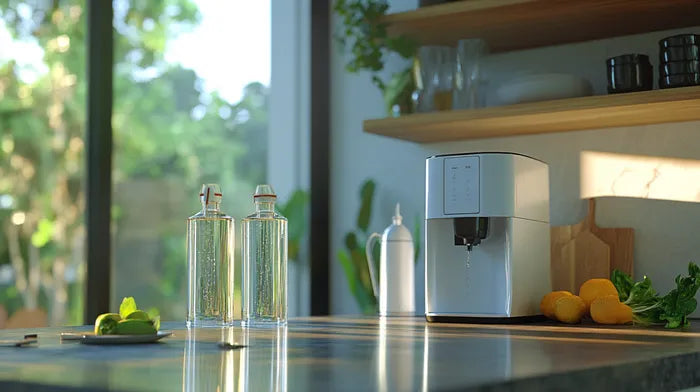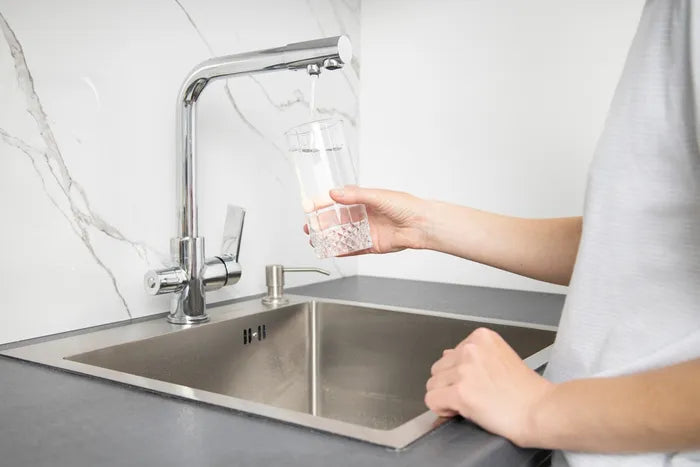Is RO Water Good For You? Advantages & Disadvantages [2025]
RO water is often praised for its purity, but is it good for your health? We're discussing the real advantages and hidden downsides of drinking RO water, including how it affects minerals, hydration, and overall wellness.
Updated May 15, 2025.

Reverse osmosis (RO) is a method of filtering water that removes many contaminants, including heavy metals and sediments like chlorine, salt, viruses, bacteria, and microorganisms. This process works by pushing water through a semi-permeable or synthetic membrane.
Although reverse osmosis water is considered one of the cleanest forms of water, along with removing potentially harmful compounds, it also removes important minerals from water. Below, we've outlined the benefits and health risks that come from drinking reverse osmosis water.
How RO Filters Work
RO filters purify water by forcing it through a semipermeable membrane under high pressure, removing contaminants and dissolved solids.
3 Key Steps in the RO Filtration Process:
1. Pre-filtration:
Water first passes through pre-filters, such as sediment and carbon filters [1]. These remove larger particles (like dirt and rust) and chemicals (like chlorine) that could damage or clog the RO membrane.
2. Reverse Osmosis Filtration
A high-pressure pump applies force to the water, pushing it against a semipermeable membrane.
This membrane has extremely tiny pores (about 0.0001 microns) that allow only water molecules to pass through, while blocking dissolved salts, heavy metals, PFAS, fluoride, arsenic, and many other contaminants [2].
The clean water that passes through is called the permeate, while the contaminants are left behind and flushed away as wastewater.
3. Post-Filtration (Optional):
Some systems include additional carbon or specialty filters after the membrane to further improve taste, remove odors, or target specific contaminants like VOCs or pharmaceuticals [3].
What Is Removed From Water by Reverse Osmosis?
Reverse osmosis filters remove:
- Organic matter
- Sediment
- Sodium
- Copper
- Lead
- Calcium
- Iron
- Magnesium
- Metal ions
- Aqueous salts
- Bacteria
- Viruses
- Fluoride
- Arsenic
- Chlorine
- Nitrate
- Trihalomethane levels
Is Reverse Osmosis Water Beneficial to Your Health?
There are two answers to this question. Some believe drinking reverse osmosis water is unsuitable for long-term use and could negatively impact health. Others believe that RO water is beneficial because it's purified and free from harmful compounds that could cause illness and disease.
Reverse Osmosis Water Benefits
1. Fewer Contaminants
RO systems are famous for their ability to remove a wide range of contaminants from water.
They can eliminate up to 98–99% of dissolved salts (ions), particles, bacteria, viruses, and chemicals such as lead, arsenic, fluoride, nitrates, chlorine, and some pesticides [2]. The effectiveness makes RO one of the most powerful filtration methods for home use.
2. Clean Water on Demand
You can install RO systems directly at your kitchen tap (point-of-use), for the whole house (point-of-entry), or use a countertop device. You won't have to rely on bottled water or boil/chemically treat the water from your tap.
Many modern RO systems also come with dedicated faucets, making it easy to access clean water for drinking, cooking, or even making baby formula.
3. Softer Water
Hard water, with high levels of calcium and magnesium, builds up scale in pipes, appliances, and fixtures, leading to inefficiency and costly repairs. R
Reverse osmosis effectively removes these minerals, resulting in softer water. This device not only protects your plumbing but also improves the taste and appearance of your tap water.
4. Reduced Risk of Illness and Disease
RO filtration provides a strong barrier against waterborne pathogens, including bacteria (e.g., E. coli), viruses (e.g., norovirus), and protozoa (e.g., Giardia, Cryptosporidium) [4].
It's an effective method for reducing the risk of gastrointestinal illnesses and other health issues associated with contaminated water.
Side Effects of RO Water
1. Flat Taste
One of the biggest disadvantages of reverse osmosis water is that it may have an unusual taste. Due to the fact that it removes water minerals, water treated this way can taste flat. Sometimes, the reverse osmosis process can also give water a fishy smell.
Drinking demineralized water over time has been linked with potential health risks, including mineral imbalance, increased risk of certain diseases, and issues like tiredness or muscle cramps [5].
After filtration, adding mineral drops to your RO water can restore essential minerals, improving both taste and nutritional value. This is a simple way to ensure your water supports overall health and hydration.
2. Dehydration Risks
Since RO water has no electrolytes and typically has a lower pH level, it’s often believed to be less effective in hydrating the body compared to alkaline or mineral-rich water.
During the RO process, essential minerals like calcium, magnesium, potassium, and sodium are removed along with contaminants. These minerals play a crucial role in maintaining electrolyte balance, supporting nerve function, muscle contraction, and overall hydration.
Now, drinking demineralized water over time may not directly dehydrate you, but it can lead to an electrolyte imbalance, potentially affecting metabolism, bone health, and even cardiovascular function.
That’s why remineralizing RO water with drops is essential—not only to enhance its taste but also to replenish vital nutrients that support hydration and overall health. By adding these back, you can enjoy the purity benefits of RO filtration without sacrificing the essential nutrients your body relies on.
3. Health Implications
Because RO water is demineralized, it lacks essential minerals like calcium, magnesium, and potassium. One study that compared processed RO water with regular water found that RO water had lower levels of total dissolved solids (measured with a TDS meter), hardness, and fluoride. The result was a higher rate of dental caries for people who drank RO water [6].
To address this, you can use remineralization drops in your RO water. They will replenish important minerals, enhancing taste and nutritional value. This helps maintain better dental and bone health while still enjoying the benefits of purified water.
Should You Drink Reverse Osmosis Water?
Reverse osmosis remains one of the best methods for removing harmful contaminants from drinking water. But, its thorough filtration also removes essential minerals your body needs, leaving the water flat in taste and less effective for hydration and mineral balance.
The answer is to drink RO water, but after restoring what was lost.
MAYU Essential Minerals offers a simple, effective way to replenish vital minerals like calcium, magnesium, and potassium in your RO water. With just a few drops, you can enjoy water that’s not only pure but also rich, balanced, and better for your overall well-being.
References:
- National Academies Press (US), “An evaluation of activated carbon for drinking water treatment,” Drinking Water and Health - NCBI Bookshelf, 1980. Available: https://www.ncbi.nlm.nih.gov/books/NBK234593/
- “Effectiveness of membrane technologies in removing emerging contaminants from wastewater: Reverse Osmosis and Nanofiltration,” Water Cycle, Available: https://www.sciencedirect.com/science/article/pii/S266644532400045X
- W. Zhang, J. Cai, G. Zhai, L. Song, and M. Lv, “Experimental study on the filtration characteristics and sediment distribution influencing factors of sand media filters,” Water, vol. 15, no. 24, p. 4303, Dec. 2023, doi: 10.3390/w15244303. Available: https://www.mdpi.com/2073-4441/15/24/4303
- “Exploring emerging water treatment technologies for the removal of microbial pathogens,” Current Research in Biotechnology, Available: https://www.sciencedirect.com/science/article/pii/S2590262824000789
- K. C. Verma and A. S. Kushwaha, “Demineralization of drinking water: Is it prudent?,” Medical Journal Armed Forces India, vol. 70, no. 4, pp. 377–379, Mar. 2014, doi: 10.1016/j.mjafi.2013.11.011. Available: https://pmc.ncbi.nlm.nih.gov/articles/PMC4223198
- S. Mulla and D. Singh, “Chemical analysis of drinking water to compare reverse osmosis processed and unprocessed water quality,” Environmental Disease, vol. 5, no. 3, p. 72, Jan. 2020, doi: 10.4103/ed.ed_21_20. Available: https://journals.lww.com/endi/fulltext/2020/05030/chemical_analysis_of_drinking_water_to_compare.3.aspx
Disclaimer: The information published by MAYU Water is not a substitute for the expert knowledge, advice, and recommendations of trained professionals. We strongly recommend consulting with industry experts and primary or scientific sources before making any health, research-related, or other important decisions.
FAQs
Can RO water cause diarrhoea?
RO water itself does not directly cause diarrhea. But drinking a lot of non-remineralized RO water may disrupt electrolyte balance, which could lead to indigestion if you're sensitive. The risk is low if your overall diet provides enough minerals
Is RO water hard on the kidneys?
No, RO water is not hard on healthy kidneys. It’s pure and low in minerals, so it doesn’t burden kidney function.
But for people with existing electrolyte imbalances or kidney issues, long-term use of non-remineralized RO water might not be ideal without dietary mineral support.
Can RO water remove microplastics?
Yes, RO water can remove microplastics. The reverse osmosis membrane has pores around 0.0001 microns, which are small enough to filter out microplastics, typically sized between 0.1 to 5,000 microns.
Is RO water acidic?
Yes, RO water is slightly acidic. Because it lacks minerals like calcium and magnesium, its pH typically falls between 5.0 and 6.5, making it mildly acidic.
But this acidity is not harmful to most people, but remineralizing the water can help raise its pH to a more neutral or alkaline level.






